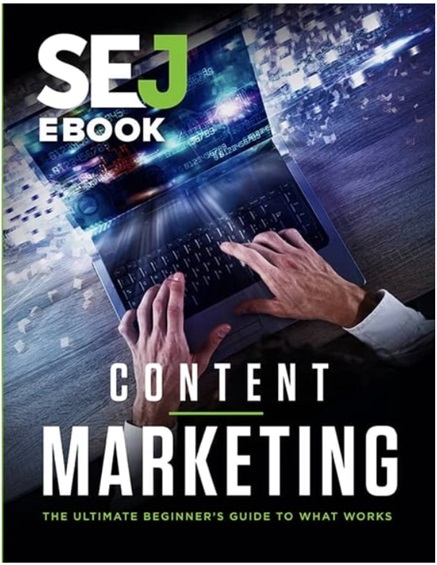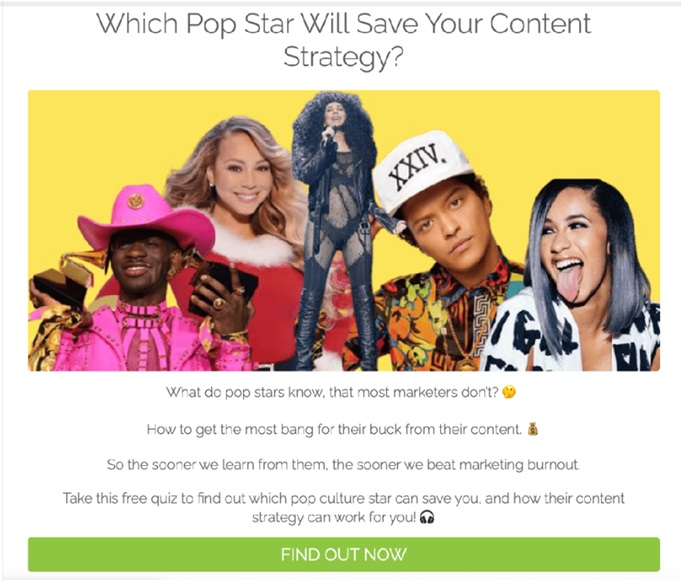
B2B Content Marketing: Top 9 Content Types [That Are Not Blogs] For Better ROI
In today’s digital landscape buzzing with ideas, trends, diverse voices (and a lot of noise), how does your brand stand out?
The answer lies in going beyond the blog post, no matter how well-researched and well-written, and experimenting with a range of diverse content formats that captivate, educate, and resonate with your target audience.
In this article, we take a look at some of the most relevant and high-impact content types for B2B businesses that savvy marketers should have in their arsenal in 2024 and beyond.
Let’s dive in.
Table Of Contents
- The Power of Diversification in B2B Content Marketing
- 9 Powerful Content Types for B2B Brands [That Are Not Blogs]
- Videos
- Emails
- Podcasts
- Webinars
- Infographics
- Whitepapers and eBooks
- Interactive Content
- User-Generated Content (UGC)
- Case Studies
- Implementing a Diversified Content Strategy
- Assess Audience Preferences and Behavior
- Set Clear Goals and Objectives
- Develop an Editorial Calendar
- Integrate Different Content Types
- Leverage Automation and Analytics
- Stay Agile and Adaptive
- Final Takeaways and Conclusion
The Power of Diversification in B2B Content Marketing
While blogs and long-form SEO articles have long been a staple in the content strategy of most young startups and SMBs, relying solely on this format limits the brand’s visibility and efficacy along the customer journey, reflected in the form of a plateau or a dip in the key content metrics.
Here’s why diversifying your B2B content arsenal is not just beneficial but essential for success:
- Increased reach and audience engagement
- Better brand visibility and recall
- Higher lead generation and conversion rates
- More effective communication of the brand’s vision, values, and capabilities
- Improved adaptability to changes in consumer behavior
- Wider data-collection and insights previously not available
Thus, diversified content helps brands gain a better understanding of their customers, reach them where they are, allocate resources effectively, and maximize the ROI of the overall marketing efforts.
9 Powerful Content Types for B2B Brands [Excluding Blogs]
Based on the experience of our B2B clients as well as going by the industry data, the following are the different content types we recommend to B2B brands. Let’s delve deeper:
1. Videos
Videos remain among the leading content formats used by B2B businesses, right behind blog posts/short articles. With good reason, since 55% of B2B buyers around the world find video the most useful type of content.
Especially for startups and small businesses, videos can be a powerful tool to engage audiences, convey complex messages, and build brand awareness. Here’s how your B2B business can benefit from adding video to your content strategy:
- Customer engagement and emotional connection: Videos evoke emotions and engage viewers in ways that text or images alone cannot. They can tell stories, showcase testimonials, and bring the human element to your brand.
- Improved SEO and traffic: Websites and written content with videos rank higher in search results, leading to increased visibility. Moreover, videos can be shared across social media platforms, driving traffic back to your site.
- Effective demo of products or services: For B2B companies, especially those with complex offerings, demo and explainer videos provide an excellent medium to demonstrate how a product works and communicate its value.
Image source: Bitpegs explainer video via Wyzowl
Tip: Attention spans are short, so aim for videos that get to the point quickly, and include a clear CTA at the end of the video, guiding viewers on the next steps. Invest in good lighting, sound, and editing for a professional finish.
2. Emails
Email marketing remains a cornerstone of B2B content strategies, providing a direct line of communication to nurture leads, share updates, and offer valuable content to the target audience. Despite the rise of various digital channels, emails continue to deliver impressive ROI when executed effectively. Most B2B businesses leverage emails to:
- Share educational and informational content: Create weekly or monthly newsletters to share industry insights, trends, and best practices to position your brand as a thought leader and to stay at the top of mind among your audience.
- Share company news, product updates and offers: Keep your customers informed about new products, features, and important news. Share special promotions exclusive to the subscribers for a high conversion rate.
- Create automated drip campaigns: By setting up automated email sequences, brands can deliver a series of messages to their audience over time, customized to each subscriber based on which stage of the customer journey they are in, without manual effort.
Tip: Check out our comprehensive email marketing guide that covers everything you need to know to start email marketing for your B2B brand in 2024.
3. Podcasts
Podcasts have emerged as a powerhouse in B2B content marketing, offering a convenient, on-the-go format that resonates with busy professionals. Here’s why they’re a must-have in your content arsenal:
- Showcase thought leadership: Podcasts provide a platform to share industry insights, trends, and expert opinions. This can be done either by hosting a podcast and inviting industry experts to discuss latest topics or by participating as a guest on someone else’s podcast.
- Building a loyal following: Consistent and high-value podcasts can help build a loyal audience eager for your insights. Create a series that addresses common pain points, offers solutions, or dives into emerging technologies, keeping your listeners coming back for more and sharing these episodes further among their network.
- Content repurposing goldmine: A single podcast episode can be repurposed into numerous content formats such as blog posts, social media snippets, email newsletters, and more, thereby maximizing your content’s reach and impact.
Hosted by: David Rowlands
Tip: Ensure the production value and quality of content of each podcast is to the best of your ability, since both reflect your brand. Promote each new episode across all your official channels like website, social media, emails, etc. to get the maximum reach.
4. Webinars
Webinars offer an immersive experience, allowing you to educate, engage, and directly interact with your audience. Here are some ways in which B2B brands can leverage their webinars:
- Establish expertise: Host webinars on trending industry topics, best practices or case studies to provide valuable, in-depth knowledge and position your brand as a go-to resource for industry expertise and insights.
- Generate leads: Webinars can be very effective as lead magnets, allowing you to capture valuable contact information of the participants and nurture those leads through follow-up emails and targeted content.
- Customer engagement: Live Q&A sessions, polls, and surveys during webinars foster direct engagement with the audience. Many B2B brands use this opportunity to address pain points, gather feedback, and tailor their offerings to the customer needs.
Watch this webinar
Tip: Plan meticulously, from choosing a compelling topic to promoting the webinar widely across channels. Ensure seamless technology and practice run-throughs to deliver a polished, professional webinar experience.
5. Infographics
In the era of information overload, infographics cut through the clutter with visually appealing, data-rich storytelling. Here’s how they help B2B brands convey complex concepts without alienating their audience:
- Instant visual impact: Infographics grab attention at a glance, making complex data and information digestible and engaging. Use them to simplify processes, explain concepts, or showcase survey results in a visually compelling manner.
- Social media shareability: Infographics are shareable gold on social media platforms. Create eye-catching visuals that your audience will want to share, expanding your brand’s reach organically.
- SEO boost: Infographics attract backlinks from other sites and improve your SEO rankings. Optimize them with relevant keywords, alt text, and embed codes for easy sharing across websites and blogs.
Tip: Leverage online design tools (many free ones like Canva are really great) or collaborate with graphic designers to create stunning infographics. For inspiration, check out this article on how to create non-boring B2B infographics.
6. Whitepapers and Ebooks
For most B2B businesses, it is critical to position themselves as industry experts and establish domain authority. For this, long-form content formats such as whitepaper and eBooks must be created to provide industry deep-dive, the latest research findings, or comprehensive details on complex (or breakthrough) products/services. With whitepapers and eBooks, you can:
- Showcase expertise: Whitepapers and eBooks position your B2B brand as an industry thought leader. Offer in-depth analysis, case studies, and actionable insights that demonstrate your understanding of complex issues.
- Generate qualified leads: Gate whitepapers and eBooks behind a simple form to capture lead information. Use this opportunity to segment leads based on interests and behaviors for targeted follow-up campaigns.
- Create resource hub for decision makers: Decision-makers seek credible resources to inform their choices. Provide them with valuable content that addresses pain points, offers solutions, and showcases your products or services’ benefits.
Read this eBook
Tip: Invest time in thorough research and content creation to deliver high-value resources. Design the whitepapers/eBooks with ease of readability and comprehension in mind.
7. Interactive Content
This is the type of content that invites your audience to actively participate in your content creation, thereby driving engagement and conversions. Here’s why interactive content is a game-changer for B2B brands:
- Captivating user experience: Interactive content, such as quizzes, assessments, and calculators, turns passive readers into active participants. Keep users engaged as they explore personalized results or insights.
- Data collection and personalization: Gather valuable data about your audience’s preferences, pain points, and needs through interactive elements. Use this data to tailor future content and offerings to their specific interests.
- Stand out from the crowd: In a sea of static content, interactive pieces grab attention and differentiate your brand instantly. Offer interactive product demos, virtual tours, or interactive storytelling experiences that leave a lasting impression on your potential customers.
Check out the quiz
Tip: Choose interactive formats that align with your audience’s preferences and goals. Utilize user-friendly platforms and tools to create seamless experiences across devices.
8. User-Generated Content (UGC)
Your most powerful advocates are your satisfied customers. User-generated content amplifies their voices, building trust and authenticity for your brand. Here’s why it’s a cornerstone of modern B2B marketing:
- Authentic social proof: Content such as customer testimonials, reviews, and user stories offer authentic social proof that resonates with potential customers.
- Increased content production: For most startups and young businesses it’s not possible to produce a lot of new and varied content during the initial phases of the business. UGC reduces this burden on the in-house content team while also helping achieve the overarching content goals.
- Community building and engagement: Encourage customers to share their experiences through contests, challenges, or branded hashtags. Foster a sense of community and loyalty around your brand, while also increasing your brand’s searchability and visibility among newer customer segments.
Source: Unilever LinkedIn Company Page
Tip: Create clear guidelines and incentives for customers to submit their content. Showcase the diversity of experiences and voices, and always seek permission before sharing customer content.
9. Case Studies
Finally, one of the most important content types for B2B businesses is case studies, which essentially demonstrate your success stories through data and results-oriented content. Here’s why case studies are indispensable for B2B brands:
- Concrete proof of results: Case studies provide tangible evidence of your product/service’s impact on real businesses. Expand on the client’s challenges or pain-points, the solutions you implemented, and the final measurable results.
- Addressing customer pain points: Potential clients resonate with stories that mirror their own challenges. Case studies that address their pain points and give an idea of the delivered value help B2B customers make their purchase decisions much faster.
- Building trust and credibility: By sharing detailed, transparent case studies, you build trust with potential clients. Demonstrate your expertise, problem-solving abilities, and commitment to client success, which will lead to a higher number of conversions.
Source: Breadcrumbs.io
Tip: Structure case studies with a clear narrative flow, from the initial challenge to the solution and outcome. Incorporate testimonials, data visualizations, and multimedia elements to enhance storytelling.
Implementing a Diversified Content Strategy
Diversifying your B2B content portfolio is not just about creating a mix of content types—it’s about strategically weaving them together into a cohesive and impactful strategy. But how do you go about it?
Here’s a roadmap to effectively implement and manage a diversified content strategy for your B2B business:
1. Assess Audience Preferences and Behavior
Conduct thorough research to uncover your customers’ preferences, pain points, and content consumption habits. What topics resonate most with them? Which formats do they prefer—audio, visual, interactive?
Tools such as customer surveys, website analytics, and social media insights provide valuable data. Look for patterns and trends that guide your decisions on which content types to prioritize and how to tailor them to meet audience needs.
2. Set Clear Goals and Objectives
Every piece of content in your portfolio should serve a specific purpose within your broader marketing goals. Whether it’s brand awareness, lead generation, thought leadership, or customer retention, define clear objectives for each content format.
For example, podcasts might aim to position your brand as an industry thought leader, while interactive content like quizzes and calculators could focus on lead generation and engagement. Align these goals with your overall business objectives to ensure a cohesive and impactful strategy.
3. Develop an Editorial Calendar
Consistency is key to maintaining audience engagement and building brand recognition. Create an editorial calendar that outlines when and where each piece of content will be published or promoted.
Consider the cadence of your content releases—how often will you publish podcasts, host webinars, or launch new infographics? Factor in seasonal trends, industry events, and product launches to ensure a steady flow of relevant and timely content.
4. Integrate Different Content Types
While each content type serves a specific purpose, they should also work together to tell a unified story about your brand. For example, a webinar on industry trends could be followed up with an in-depth whitepaper expanding on the discussed topics.
Repurpose and cross-promote content across channels to maximize its reach and impact. Share snippets from podcasts on social media, embed infographics in blog posts, or create email campaigns highlighting recent case studies.
This integration creates a seamless customer journey, guiding prospects from awareness to conversion.
5. Leverage Automation and Analytics
Streamline your content management process with automation tools that schedule posts, track engagement, and analyze performance. This frees up time for strategic planning and content creation while ensuring consistent delivery.
Additionally, dive deep into analytics to glean insights into what’s working and what can be improved. Monitor metrics such as website traffic, social media engagement, lead conversions, and audience feedback. Use A/B testing to optimize content formats, headlines, and calls-to-action for maximum effectiveness.
6. Stay Agile and Adaptive
The digital landscape is dynamic and your content strategy should be agile enough to adapt to its changes and emerging trends. Keep an eye on industry news, competitor strategies, and shifting consumer behaviors.
Try out new content types, topics, and distribution channels. Test different approaches, measure results, and iterate based on data-driven insights.
You’ll be able to stay ahead of the curve and maintain relevance in a dynamic market by staying nimble and responsive.
Final Takeaways and Conclusion
Contrary to popular belief, B2B content doesn’t need to be one-dimensional, boring, or limited to the typical blog posts. By diversifying their content portfolio, B2B brands can unlock a world of possibilities to engage, educate, and inspire their audience.
Each well-thought-out piece of content plays a crucial role in your success—From meeting your customers where they are to delivering value at every touchpoint.
To put your insights into action, review your existing content strategy, identify areas for diversification, and set concrete goals for incorporating new formats. Engage your team in brainstorming sessions, collaborate with industry influencers, and leverage customer insights to fuel your content engine.
For professional help with creating and implementing an effective content strategy to take your B2B business to the next level, let’s connect on a free 1:1 call.
Found This Article Valuable? Share!
Shubhi is a marketing consultant with 13+ years of experience working with global organizations across sectors and now as an entrepreneur. She specializes in marketing, branding, and content strategy, and is passionate about helping startups and SMBs scale their businesses profitably. Shubhi is an alumna of IE Business School (Madrid) and SIBM (Bangalore), and is currently building and growing ‘Exemplarie’.










